Lucasfilm shared a look inside their highly themed Star Wars lounge, dubbed the Rebel Hideout, and its creation by a group of ILM and Lucasfilm employees.
Lucasfilm’s Rebel Hideout
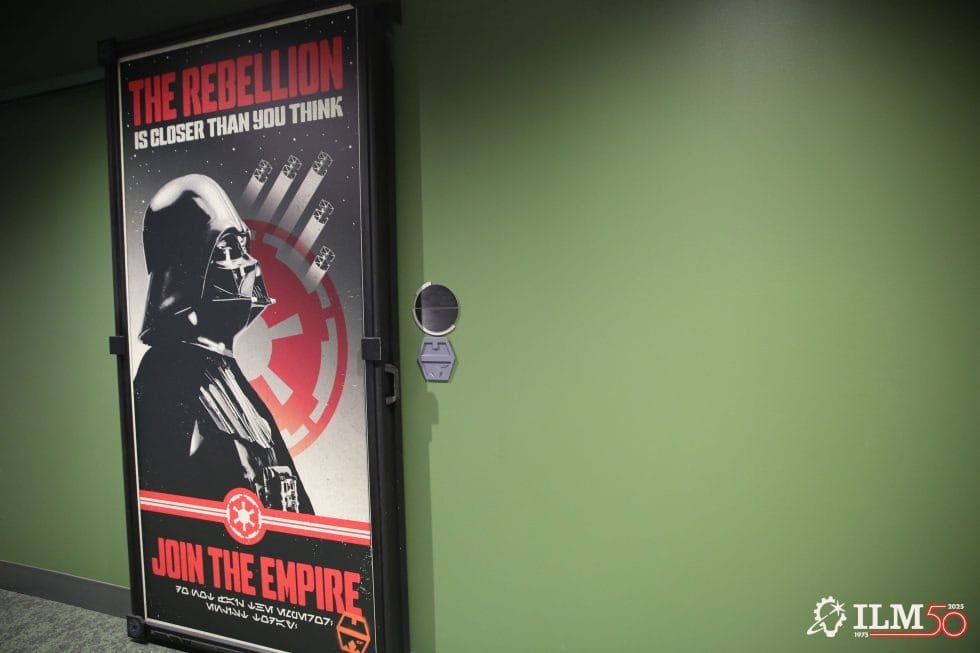
At Lucasfilm’s San Francisco headquarters, the Rebel Hideout’s secret entrance is behind an Imperial propaganda poster. The lounge has a backstory and its own “opening crawl.”
It is a period of intrigue. Imperial outposts scattered across the galaxy search for signs of the fledgling rebellion. Intrepid rebel agents have infiltrated the Empire’s Logistics, Deployment, and Allotment Center – LDAC – on planet Yerbana. From the heart of this Imperial base, the rebels have carved out a secret outpost to monitor enemy activity, contact other rebels, and recharge all the while avoiding the eyes of the Empire….
LDAC, or the Letterman Digital Arts Center, is the former name of the Lucasfilm headquarters.
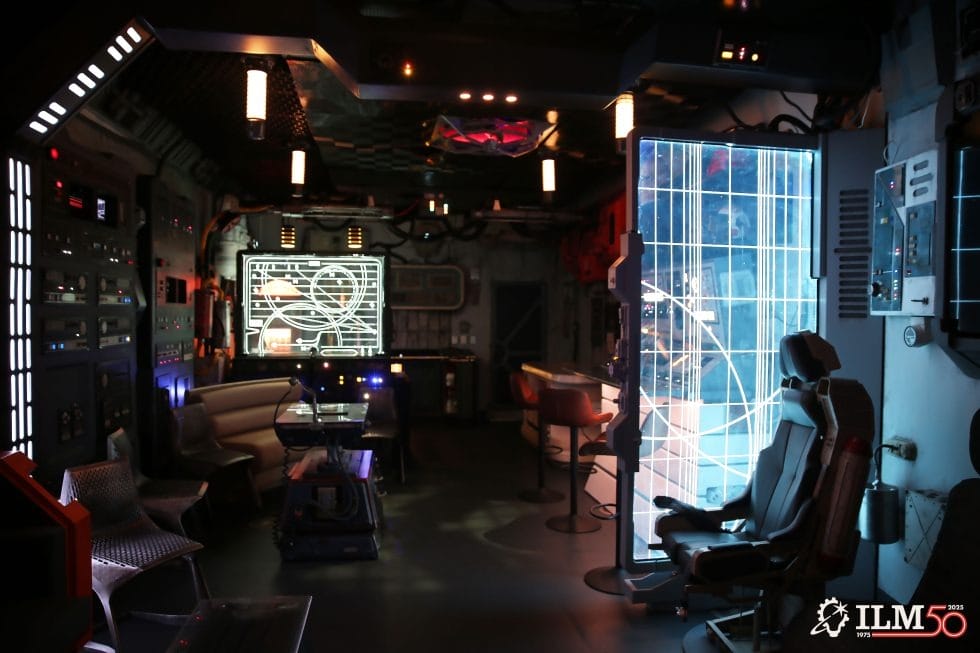
Employees spent over a decade planning and constructing the Rebel Hideout.
“The fact that this is employee-created is the most joyous part of the entire thing,” said R&D engineer Mike Jutan, one of the project’s originators.
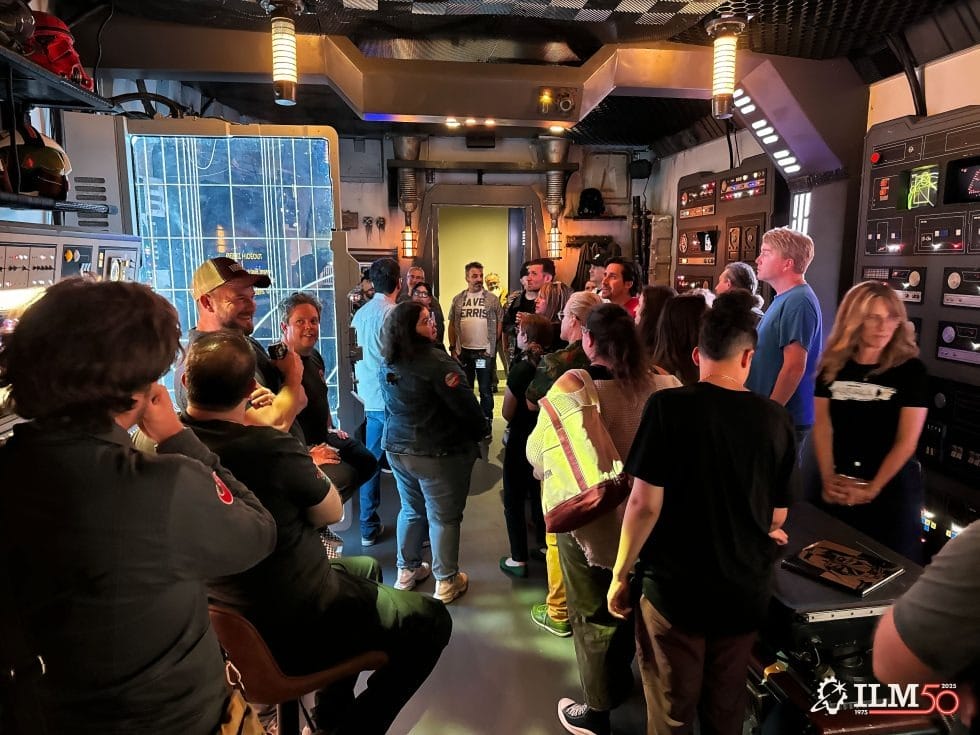
“We’re not bragging about this room,” said head of CG, Michael DiComo, another leader of the lounge’s creation. “We are as amazed as anyone. How in the world did it get this good? We had dreams, and we’re so happy to be part of it, but we couldn’t have guessed it would be this great because everyone went so over the top. It’s the ILM spirit of everyone collaborating, doing more, and asking, ‘What do you need me to do?’”
In addition to looking like a scene straight out of Star Wars, the room also has effects. Sometimes sirens blare or spaceship engines are heard. There’s a music system that can be switched to “disco mode.”
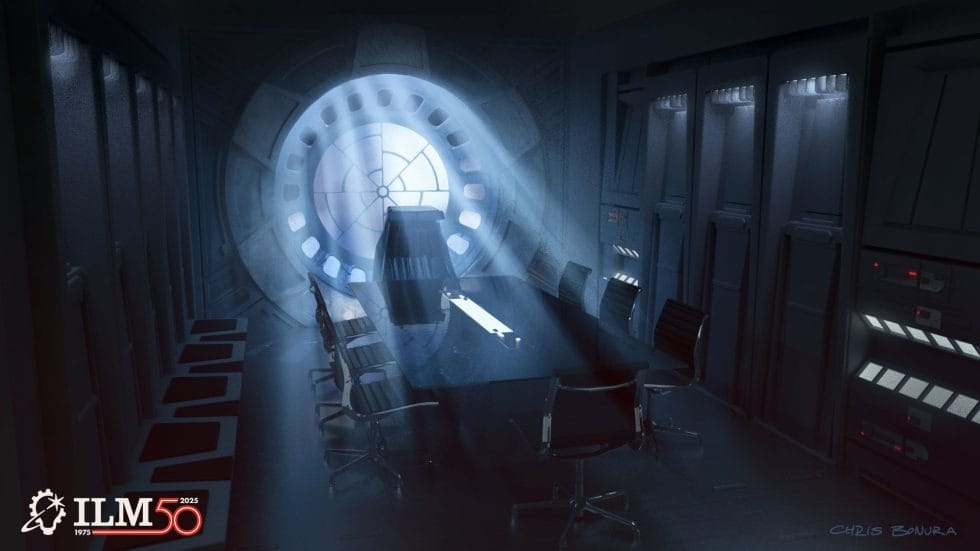
Jutan was inspired by hidden and elaborately themed spaces at Pixar Animation Studios, where he had interned before joining ILM in 2007. By 2013, a small group of ILM employees including Jutan and DiComo were working on the idea. Earlier concepts for the room had it resembling Mos Eisley Cantina or an Imperial conference room. Then ILM general manager and now president, Lynwen Brennan, told the team to dream bigger. Landis Fields created multiple digital walkthroughs to help the team bring their vision to life.
“Landis sort of kit-bashed all of these different Star Wars ideas into the design to see what might be possible,” explained DiComo.
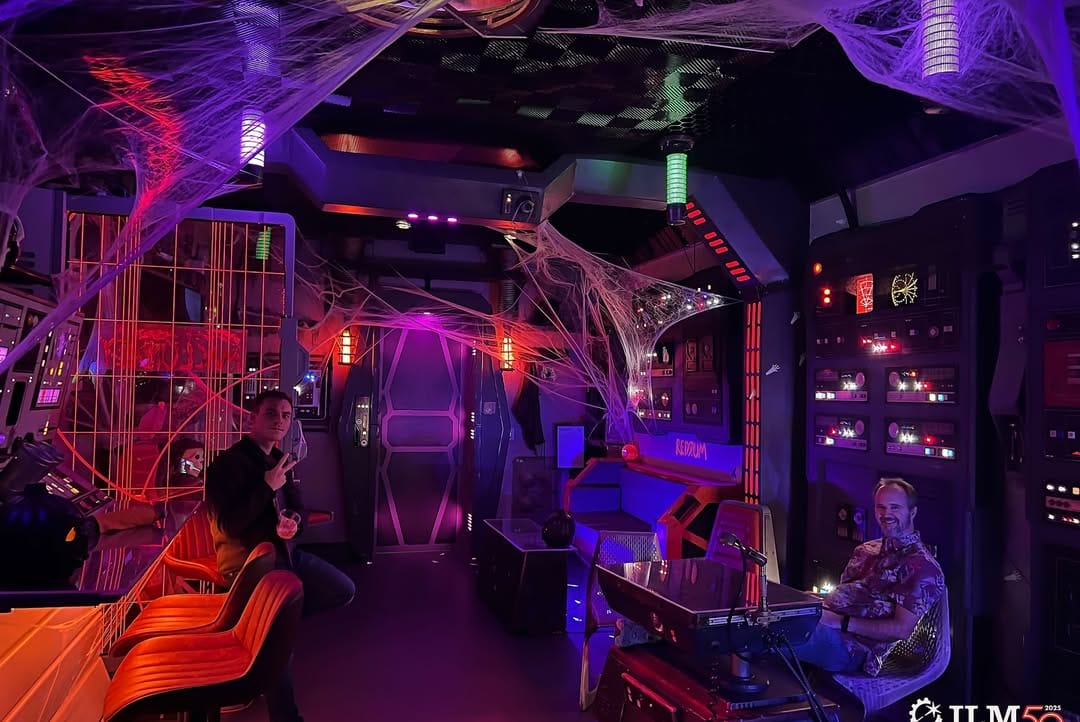
“This is a place where you can come get coffee, take a quick break, have a meeting, enjoy some music, read a book, or sit around and work on your laptop,” Jutan described. “There’s no ‘one size fits all.’ People want different things out of a space like this, but the common thread is bringing people together.”
Despite delays due to budget and space constraints and the COVID-19 pandemic, the team was eventually able to bring the room together. Julie Stallone joined the team as project producer in 2023.
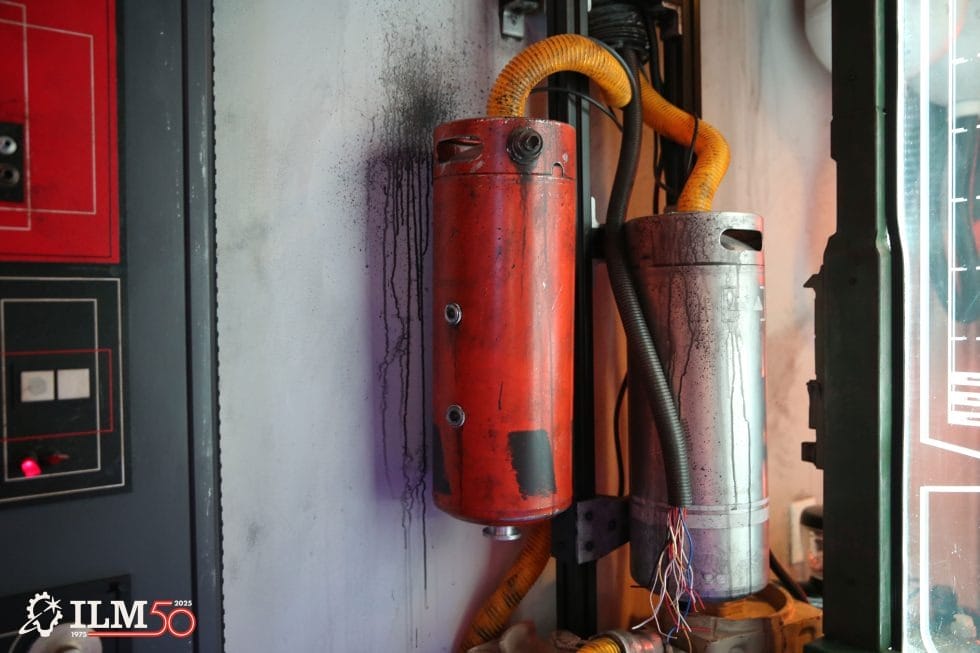
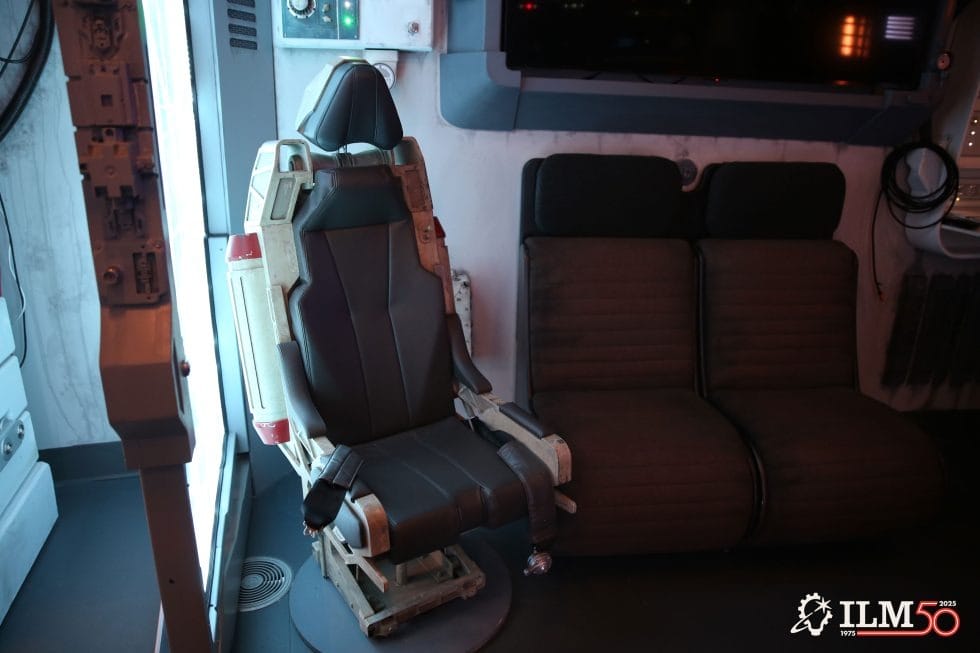
Some of the furnishings are custom designed and constructed. There are also prop replicas and toys. The team planned to create even more prop replicas but then Lucasfilm archivist Portia Fontes reached out and offered screen-used props and set pieces from recent productions including Rogue One: A Star Wars Story (2016), Solo: A Star Wars Story (2018), Star Wars: The Rise of Skywalker (2019), and Andor (2022-25)
“We could never have built anything as amazing as these set pieces with the time and budget available,” DiComo said.
Fontes and Colin Merchant, a member of the Andor props department, curated select pieces. Senior producer John Harper and the Lucasfilm Online team provided more screen-used props and custom-made furniture from a recent Star Wars Celebration.
Lucasfilm director of franchise content and strategy, Pablo Hidalgo, helped create the room’s backstory.
“When we realized that we had all sorts of different props available to us, having a specific story structure helped limit what items we would use,” said Hidalgo. “Some things fit the story, and some didn’t. From there, we built out the story that fit the context of this room and aligned with the characteristics of being rebels. It’s in the classic trilogy era, with the Rebellion and Empire. We also use some sequel trilogy props from the Resistance and First Order if they have a timeless character to them.”
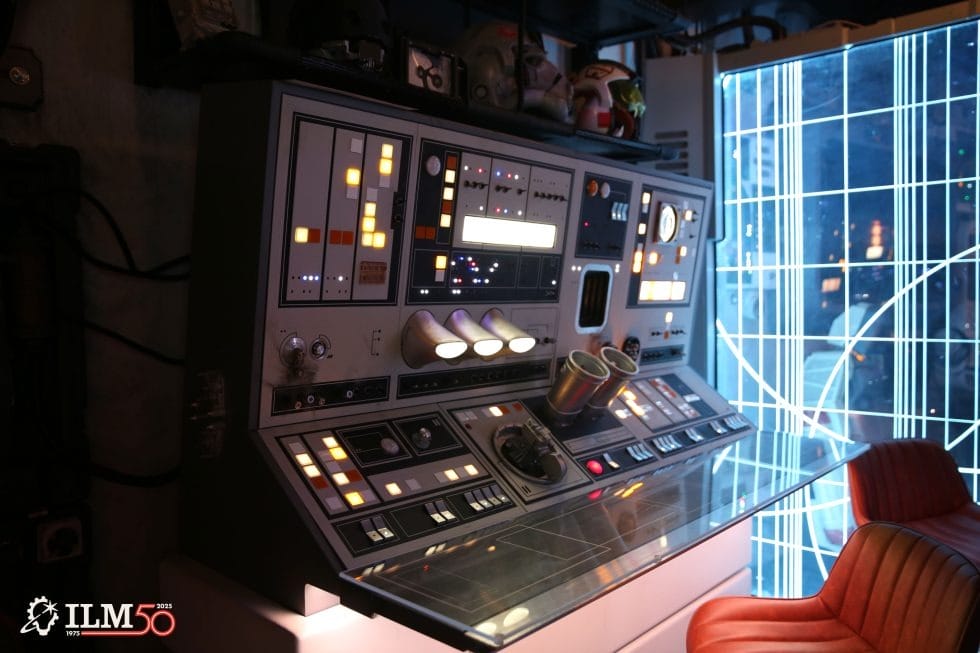
The props that ended up in the room include a Hammerhead Corvette pilot’s chair from Rogue One, an Imperial security camera from Andor, Babu Frik’s work table and part of a Star Destroyer work station from The Rise of Skywalker, a rebel base tactical screen divider from Rogue One, wall panels from the Aldhani garrison in Andor, and the Millennium Falcon’s tech console from Solo (pictured above).
Kyle Johnson became the team’s “secret weapon,” leading them in rebuilding, fabricating, and installing set pieces.
“We had to make everything actually work together in the room where people could sit on something, bump into something, or push the buttons on something,” Johnson said. “How do we cut everything down to make it fit well in the space? Doing traditional set work, you can position things all over the place so long as it looks good in the shot. With this, you have to make it work with a purpose that fits in with the rest of the room, and it has to look really good.”
Johnson designed the Imperial propaganda poster entrance with Hidalgo, concept artist Katarina Kushin, and the Lucasfilm Art Department. It slides to reveal a custom Imperial doorway.

“You get the feeling like you’re entering another place, not just going through a door,” Johnson explained. “It’s 18 inches deep with lights on the side. You’re moving through a narrow tunnel, almost.”
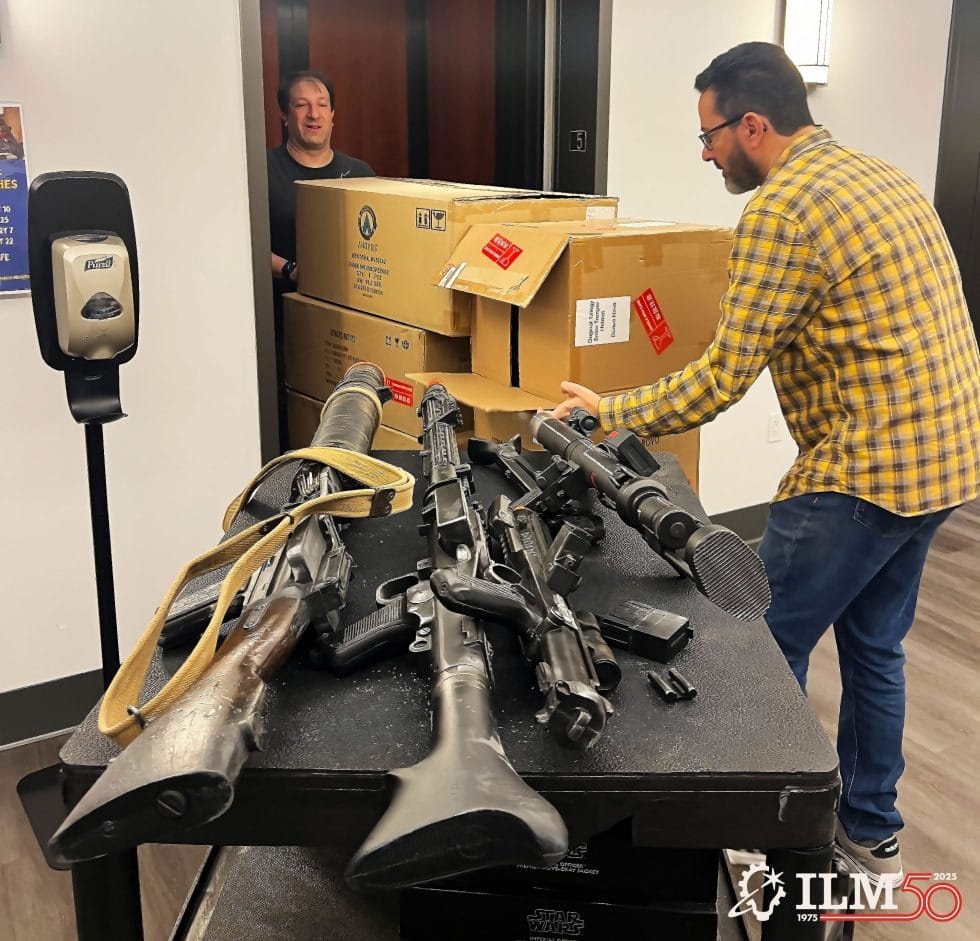
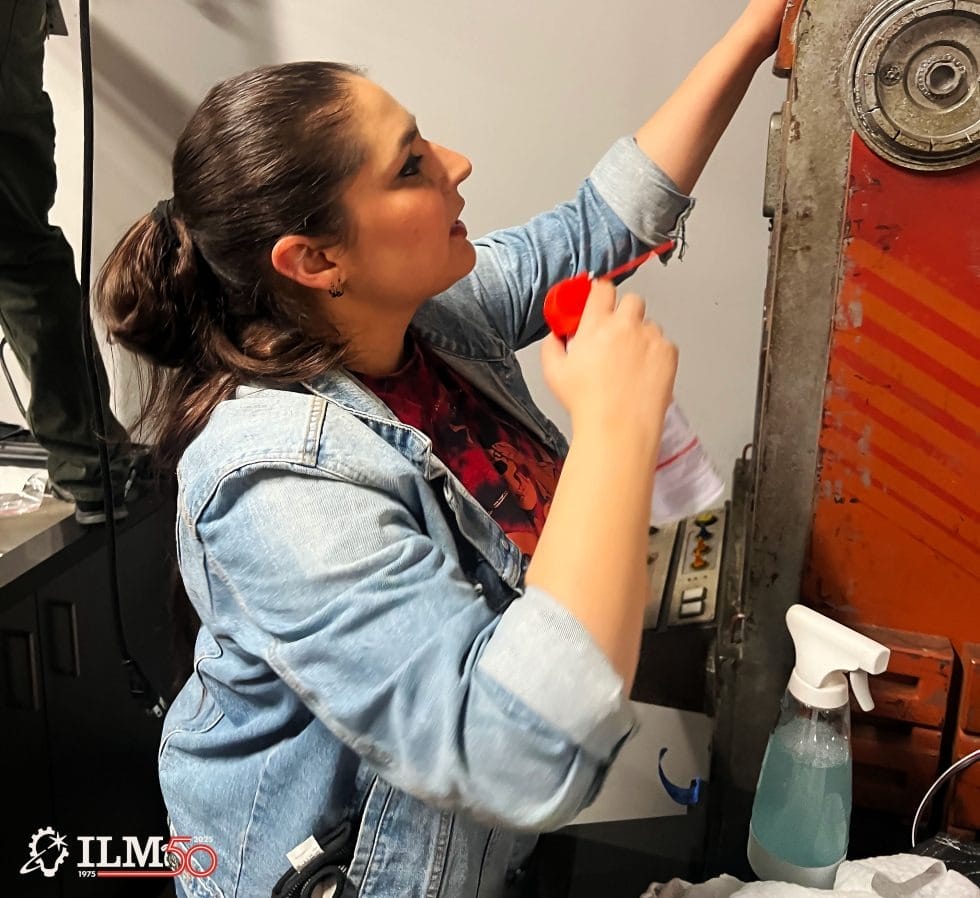
Senior lighting artist Rebecca Forth worked on the props, saying, “For me, this project felt similar to what it must’ve felt like to work in the ILM Model Shop back in the day. It felt like this was the closest I’d ever get to that tactile experience of putting your hands on everything, and making little mistakes that actually turn into a great feature. It was about having everyone together and trying to figure out how things would function.”
“For the most part, we wanted to restore each item to look as it did on screen, as well as give it a longer life,” Forth explained. “Many of these were built to last for the length of the shoot. One of the tougher projects was the pilot’s chair from Rogue One. There were some wooden pieces that had shattered, which we had to carefully glue back together. The cushions had been adhered with glue tape that was disintegrating, so we put in new velcro strips that could last much longer. The headrest had some missing hardware that needed to attach it to the base.
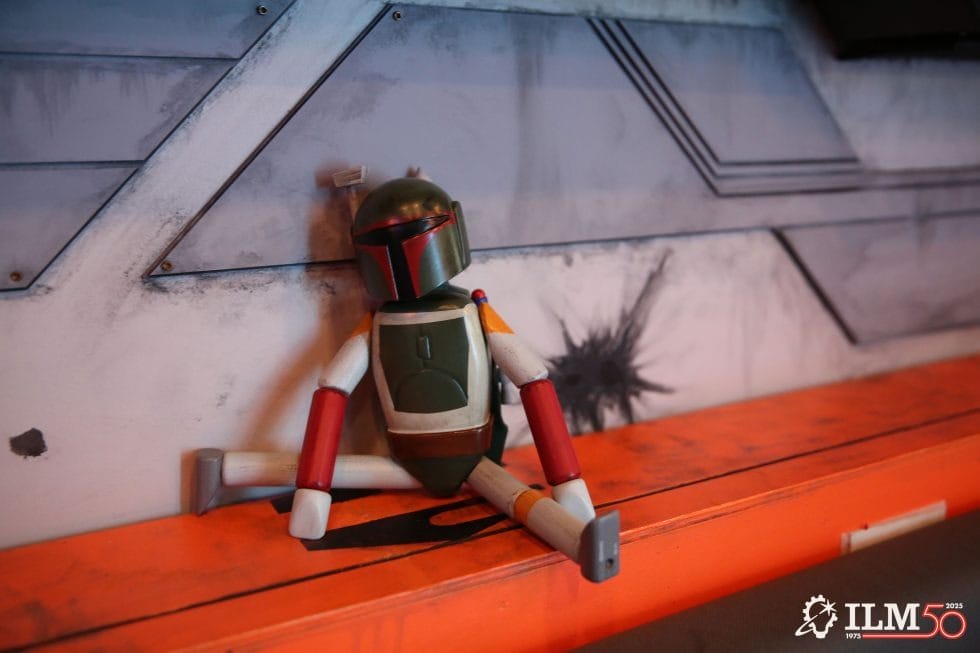
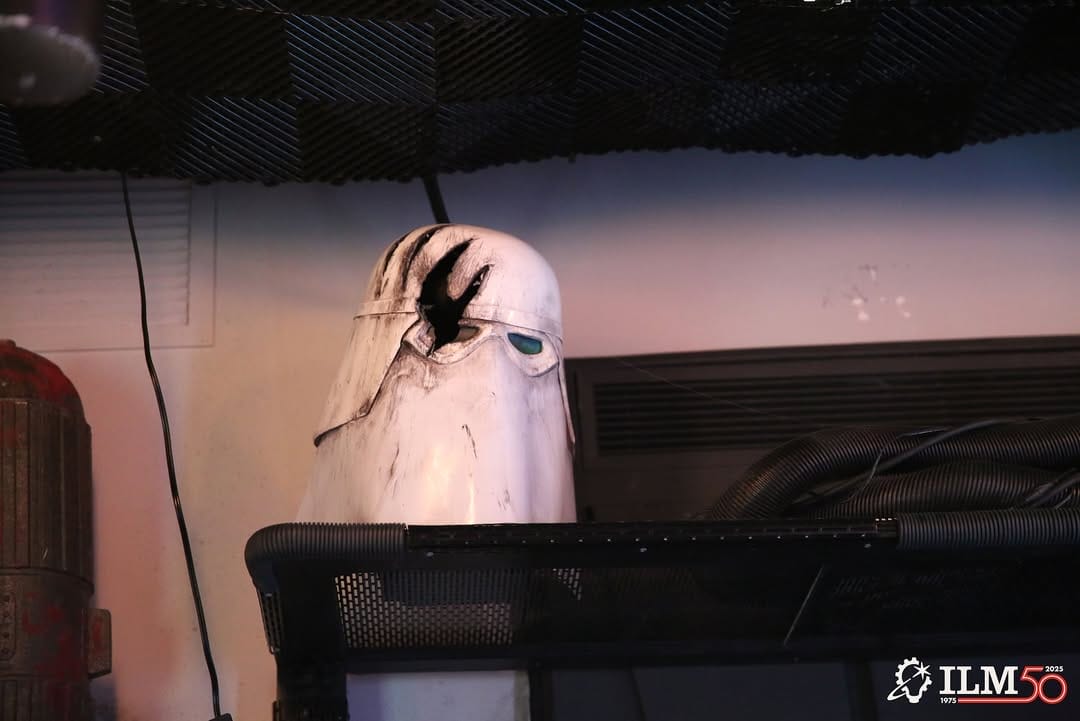
“We didn’t want to remove any intentional dirt or weathering from the items,” Forth continued. “This stuff had been in storage, so it had some real dirt and dust, but then it also had intentional dirt. You had to be really careful when you were cleaning so that you didn’t take that off. It was about restoring the piece and keeping intact the initial intention and craft of the artist who’d put it together.”
Robb De Nicola, Patrick Louie, and Max Frey from Tom Spina Designs helped the crew with final details, including weathering a replica snowtrooper helmet.
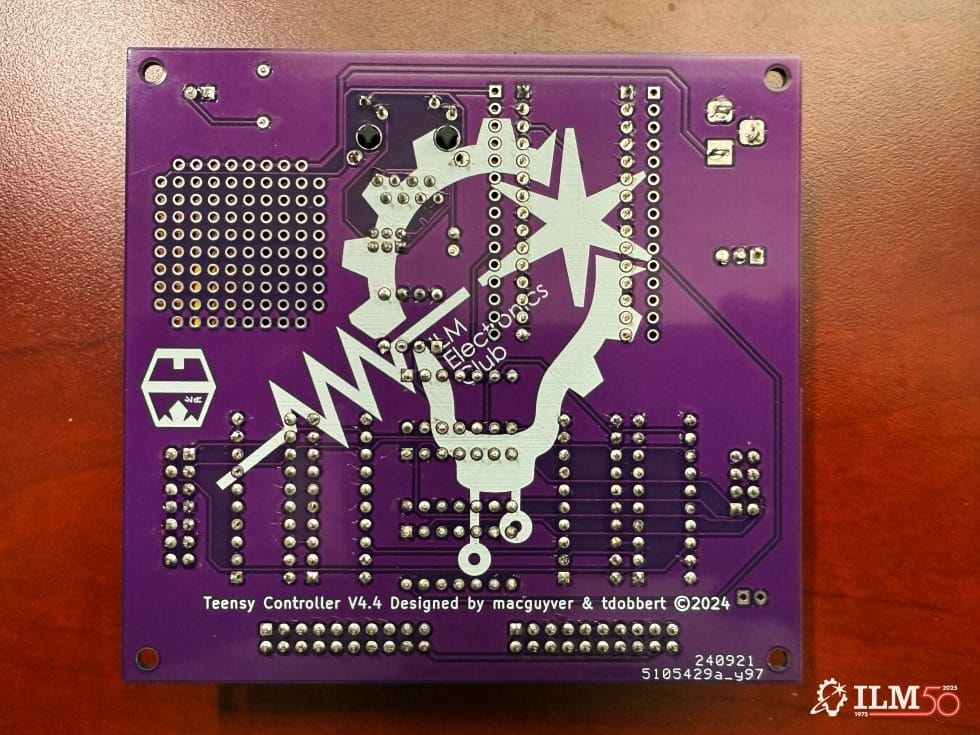
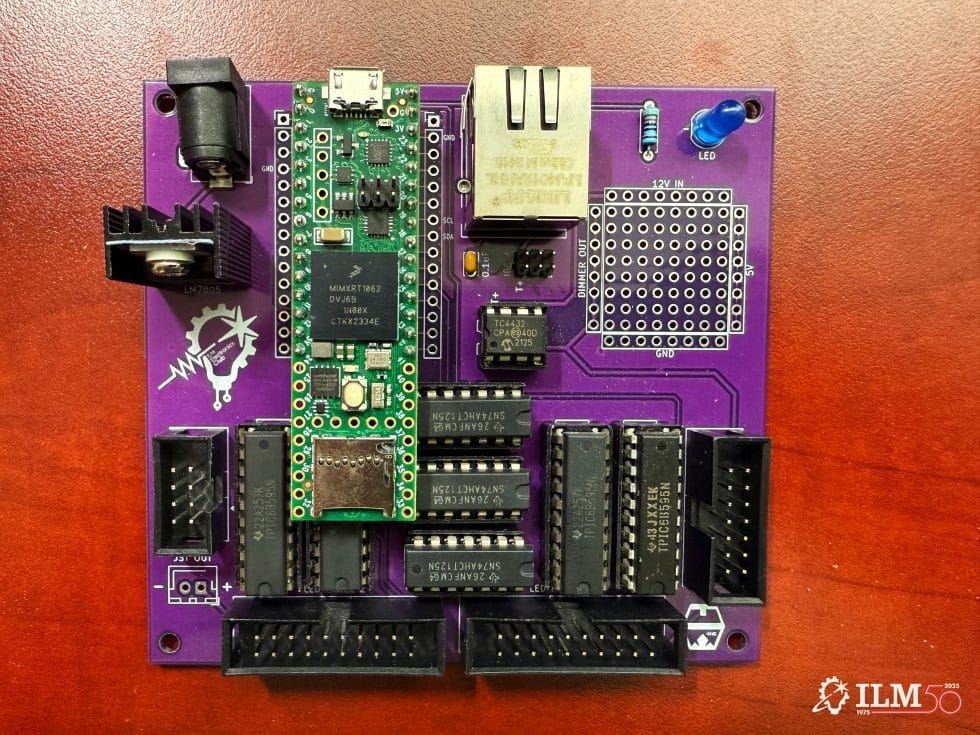
Members of the ILM Electronics Club stepped up to take on the Rebel Hideout’s electronic system, including systems engineer Trent Bateman and layout supervisor Tim Dobbert.
“My first project was helping to get the Millennium Falcon console online,” says Bateman. “Tim and I came in to figure out how to get the lights to simply work. We tried lots of different methods and couldn’t figure it out. Tim suggested that maybe these props were wired differently because they were made in the United Kingdom. So then we got it to light up, and we determined what the right voltages were. From there, we had to figure out how to make everything work. We developed several iterations of the circuit boards to find the best way to light everything without blowing the circuits or frying the micro-controllers. We had to build a network so that everything could talk to each other. That took about two months. Once that was in place, we replicated and grew the system across the entire room.”
Head of the Visual Effects Editorial Department for ILM’s San Francisco and Vancouver studios, Lorelei David, had joined the Electronics Club with no prior experience in the field. Mentored by her colleagues, she joined the Hideout team to help lead the hardware creation.
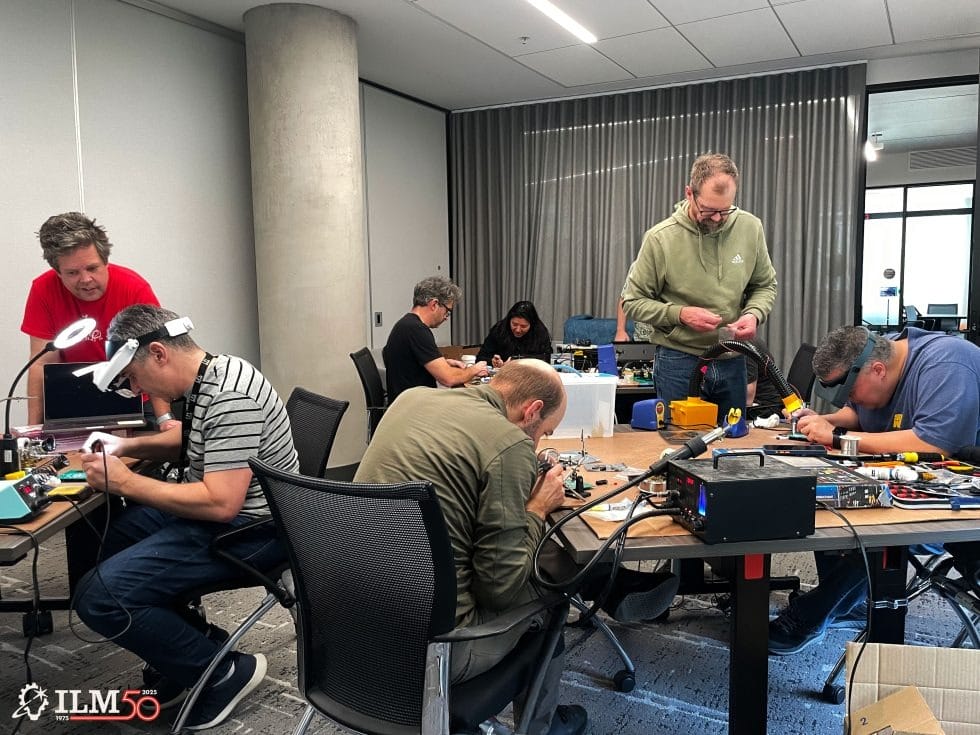
“Trent had the micro-controllers, and he designed these beautiful, custom circuit boards,” said Lorelei David, head of the Visual Effects Editorial Department for ILM’s San Francisco and Vancouver studios. “We realized it needed a lot of soldering, more than we could do on our own. That’s when we decided to have a ‘soldering party’ in a big conference room at the office. We invited anyone in the company who wanted to learn. We provided instructions, references on a screen, and examples for them to look at. It was a great opportunity to meet a bunch of people from across the company.”
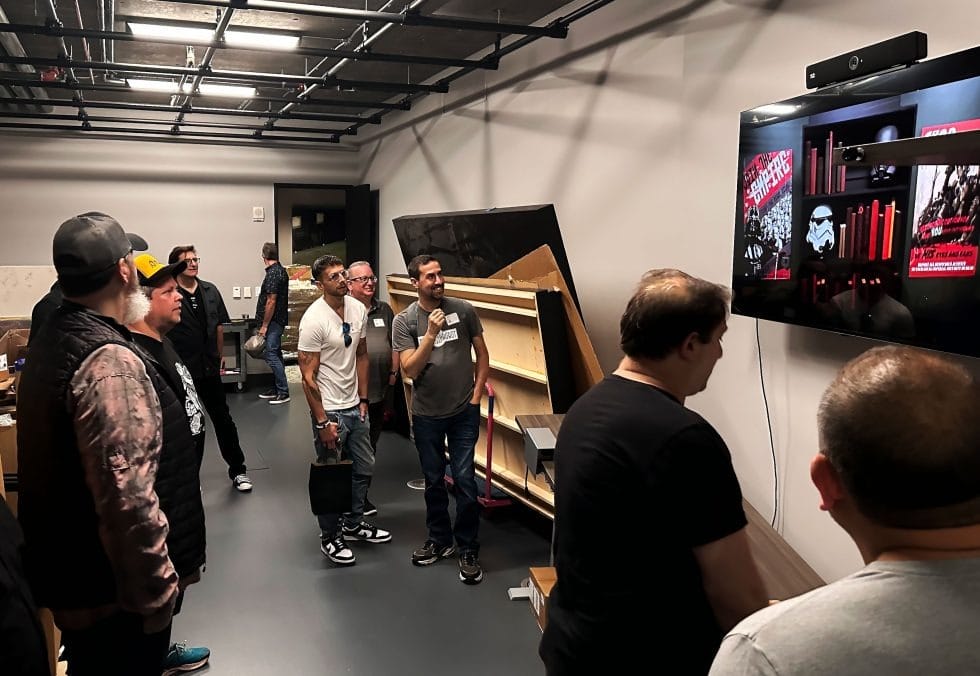
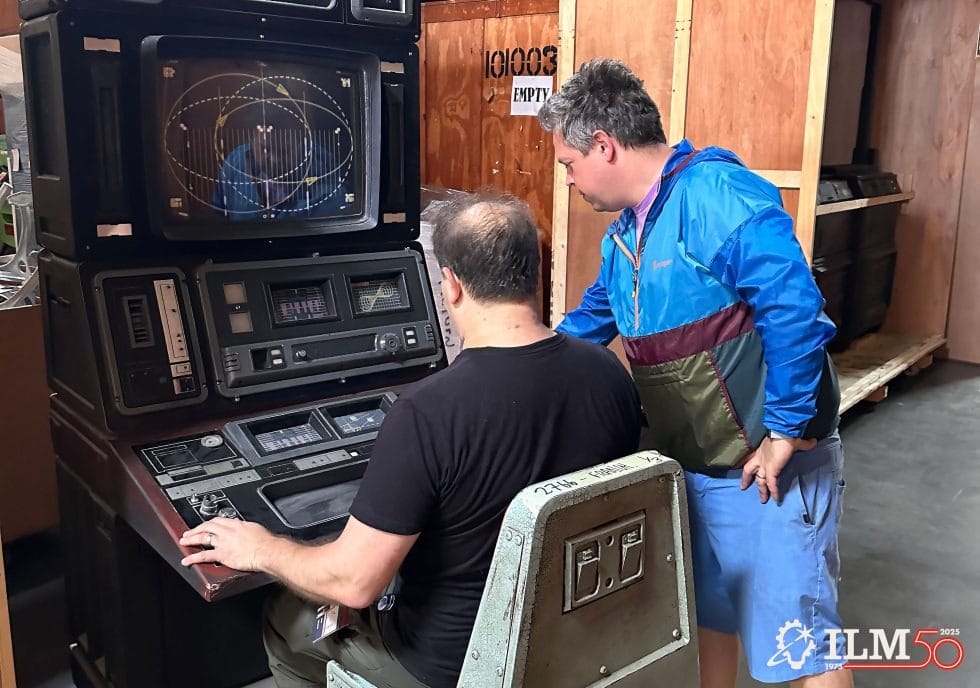
Media systems engineer Paul DeBaun, R&D principal engineer and architect Nick Rasmussen, and former AV design engineer Greg St. Germain worked on the room’s audio and video. They equipped iPads to run graphics and images.
“We built a 10-channel speaker system out of old parts that we had on hand, including two subwoofers,” DeBaun explained. “We ran the wiring for the system throughout the ceiling and used QLab to run everything. We also worked on the dimmer packs for the lighting. There are about 36 channels of adjustable lighting patterns throughout the room.”
Hirschfield added, “We were perfectly willing to beg and borrow as much as we could. We had a budget, but we also kept finding these opportunities to adapt existing tools to make the room better.”
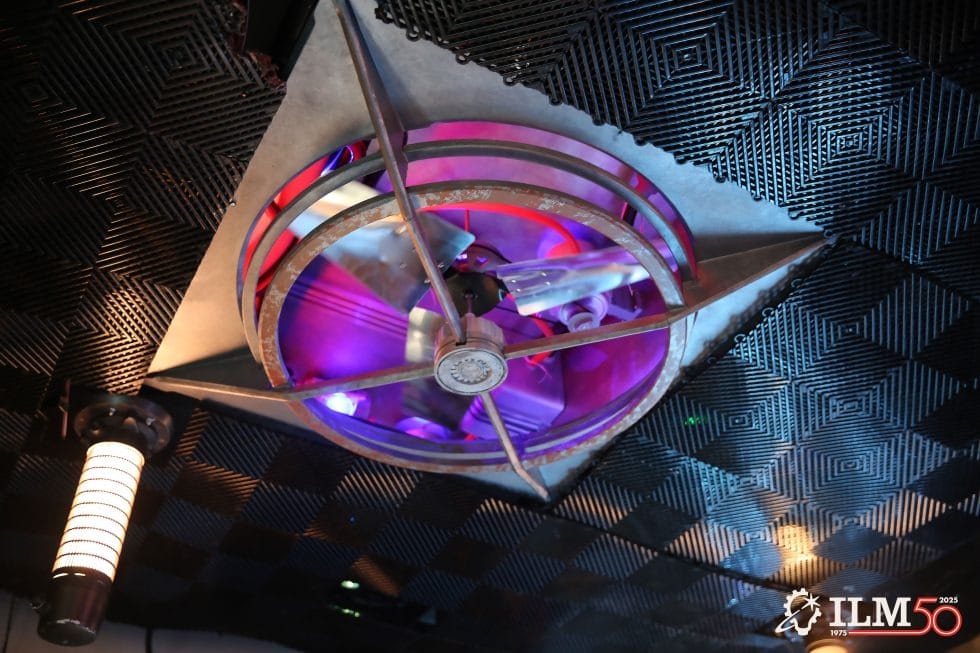
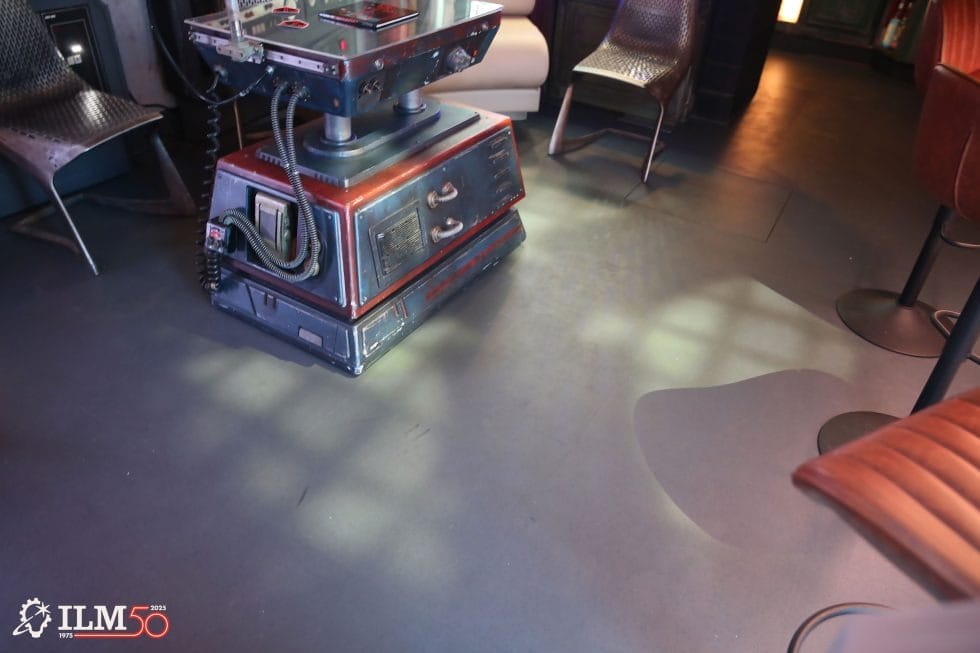
An original piece was a ceiling fan and its “impossible shadow,” mainly created by DeBaun.
“I really wanted to make sure that something was moving,” DeBaun said. “Most everything in the room is still, except for the fan.”
Regarding the shadow, DeBaun explained, “We can’t physically make that shadow in the space because of the height of the ceiling. So we project the shadow to spin in time with the fan’s rotation position so that it matches.”
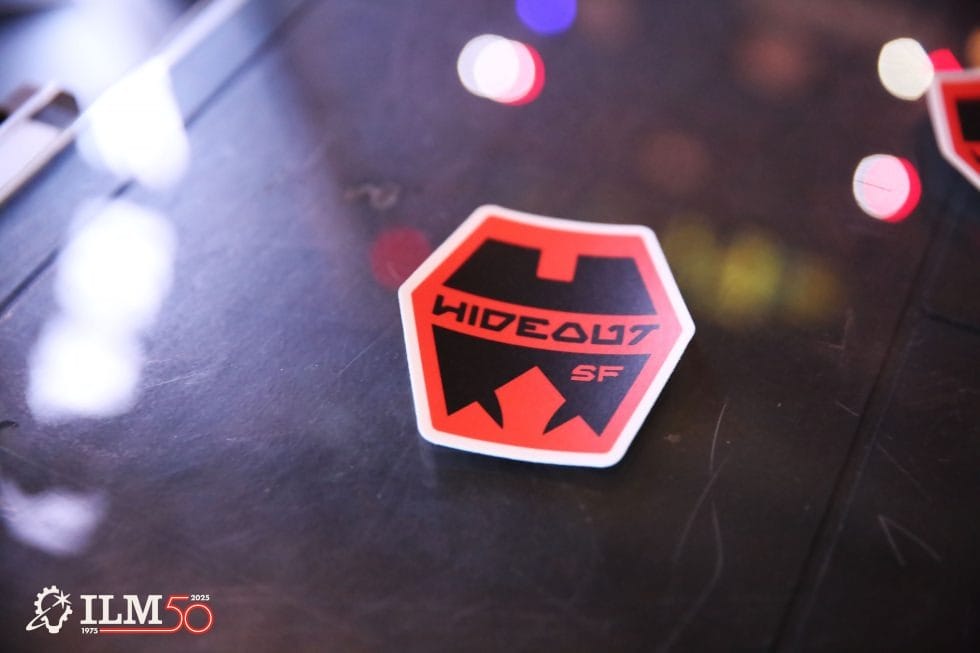
Johnson, associate producer Michelle Thieme, executive design director Doug Chiang, and other members of the Lucasfilm Art Department worked on the Hideout’s custom insignia. It’s inspired by the shape and silhouette of the Yoda fountain at the studio’s entrance.
The Rebel Hideout opened in May 2024. It has hosted casual meetings, hangouts, interviews, photoshoots, family tours, and parties. Some updates were made to the room after opening.
Bateman explained, “We don’t want this to feel like a museum where you can look but not touch. We want visitors to feel like they are actually in Star Wars, and that means allowing them to not only play with the props, but for the props to play back. To that end, we’ve worked together to come up with various Easter eggs throughout the room (like a ‘Red Alert’ siren and ‘Disco Mode’), as well as more involved additions like a ‘Rebel DJ’ activity where guests can use switches on the Millennium Falcon console to compose music.”
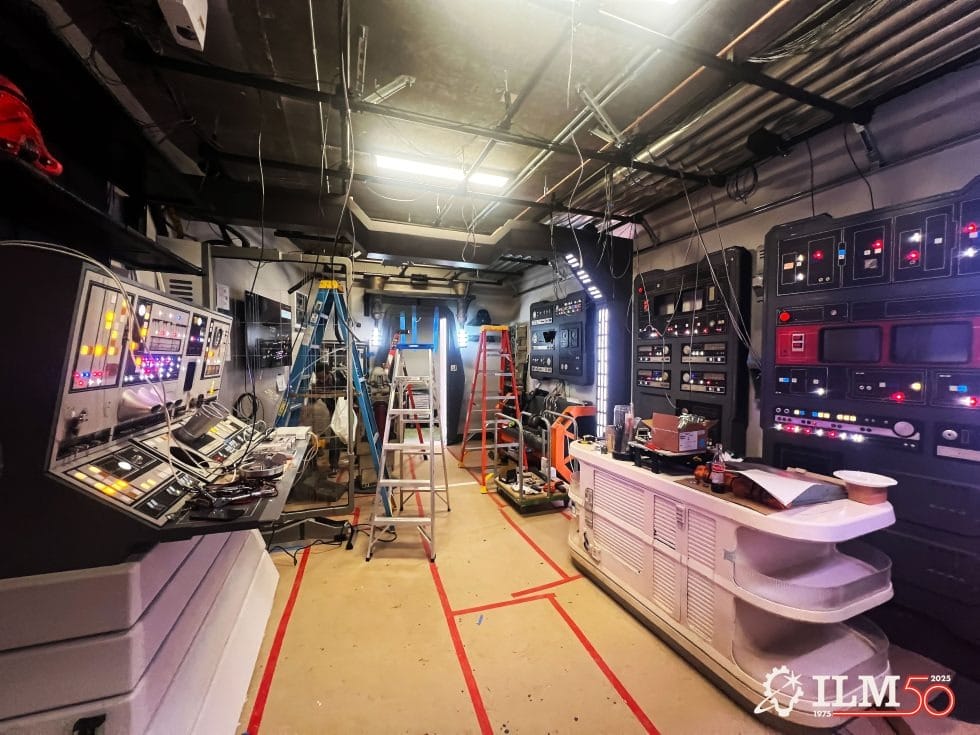
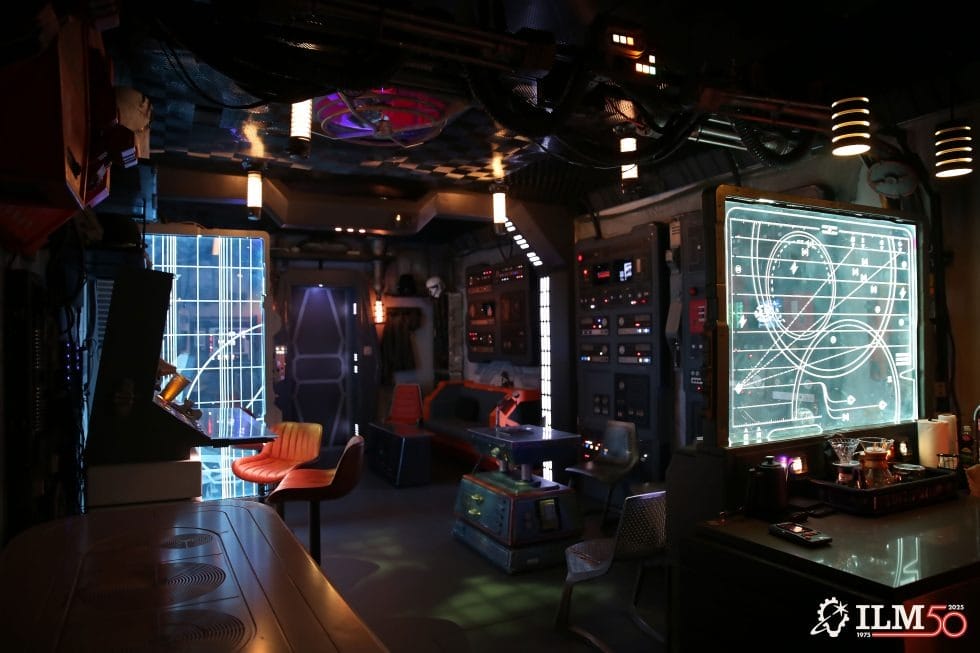
“‘Ego-less collaboration’ is the phrase we use all the time,” DiComo said. “It’s who we are. When you have something special like the Hideout, it amplifies the whole feeling. This is why I’ve been here for 30 years – the spirit of these people.”
“This has been like an old-fashioned barn-raising,” Jutan condcluded. “Everyone pulls together to create something that’s much more amazing than its individual parts. It’s like every movie and visual effect that we make. One of the first times we toured [Lucasfilm senior vice president of creative innovation, digital production and technology] Rob Bredow through the room, he said that the project was done purely in ILM’s style: If a project is worth doing, it’s worth over-doing.”
For the latest Disney Parks news and info, follow WDW News Today on Twitter, Facebook, and Instagram.
